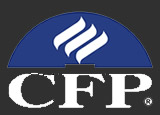Mutual Funds are everywhere! They are in your retirement accounts, your personal investment accounts, your pension system, they dominate TV and radio commercials, and entire magazines are dedicated to tracking their performance. But just what exactly is a Mutual Fund? Chances are your financial future is somehow affected by the selection, performance and quality of a Mutual Fund, so perhaps it’s a good time to go over some basics regarding this popular investment vehicle. Besides, the best time to review or talk about a “basic” concept is when it is so “understood” that everyone assumes everyone else already knows about it.
Mutual Funds have been around in some shape or form since the early 1800’s. In the US the first fund that looked anything like what we use today began in Boston in 1924.i By 1928 there were 19 open‐end funds. By the 50’s there were still only about 100 mutual funds in the market. Today, they are worldwide and in the US alone there are over 10,000 funds. There are more mutual funds than public companies. In less than 100 years they have managed to become the main repository for most longterm investors. Why, you might ask?
Well, first of all, there are many ways to invest your money; the traditional way is to buy individual stocks of publically owned companies, like IBM at about $123.67 per share on 4‐22‐08, or Microsoft at only about $30.25 per share on 4‐22‐08. These are public companies, owned by shareholders—and managed by a Board of Directors for the benefit of the shareholders. The profits are returned to the owner/shareholders in the form of dividends or increased stock value.
You could also walk down to your neighborhood FDICii insured bank and buy a Certificate of Deposit (CD) in which the interest is pre‐determined based on the terms set by the bank. Here, the bank basically borrows your money at one rate and lends it to someone else at a higher rate. The bank profits from the difference or spread.
Or you could even buy shares of oil‐well‐drillers or lease heavy equipment to construction companies. There are many different investment options for today’s investors; but with the chance for reward comes risk—nothing is free—and the price of investing is taking on risk.
Mutual Funds allow multiple investors to pool their money in an attempt to spread out the risk—thus reducing it. Investing in a Mutual Fund reduces single security risk—that is, the risk of your individual security or stock performing poorly or even going out of business.
Investors who owned Enron stock at the time of their collapse know about risk‐‐they lost most of their investment. Today’s headlines, (April 2008) are full of stories about investors who owned Bear Sterns stock—which, about a year ago, was worth $160 per share, today (4‐22‐08) they’re selling for $10.54.
As we noted earlier, stockholders are actual owners of the company—their piece of the company, albeit a very small piece‐‐links them to its financial well‐being. When a company fails to survive, the owners/stockholders can and do lose their investment—sometimes all of it! And while stock holders are not liable for outstanding debt or obligations generated by their company—i.e., they can’t lose more than they invest‐‐they are last‐in‐line for any precedes that might be leftover when a bankrupt company’s assets are sold off.
To reduce the possibility that an investor would lose all their money, some pretty smart people invented Mutual Funds. There are a number of types of Mutual Funds—closed or open, passive or actively managed, growth, blended, or value funds—and so on. Remember, there are over 10,000 funds today.
Let’s just deal with open ended funds—that means you can purchase or sell shares at the current market value whenever the stock market is open. Some major differentiators are whether the mutual fund is actively or passively managed and the different sales charge on a fund.
An actively managed fund is a fund that is run by a portfolio manager who investors believe will make the right stock‐picks to beat the market. They hope that the manager’s expertise and acumen produce a profit.
A passively managed fund is where the fund invests in a particular asset class, buying companies regardless of their merit or financial outlook. It is the asset class that’s important—and the passive fund will invest in a representative group of companies to achieve market returns for that particular asset class. For example, an S&P 500 index fund will buy stocks that mirror the companies in the S&P 500 Index. Passive fund investors believe it is futile and expensive to try and beat the market.
Regardless of the type, active or passive, the fund will buy and sell positions (stocks and bonds) based on a written methodology or style—and these guidelines are found in the fund’s prospectus. A mutual fund’s prospectus also contains important information on the investment objectives, risks, charges and expenses of the fund. Investors should always carefully consider and read the prospectus of the mutual fund before investing in the fund.
The overall worth of all the Fund’s holdings are determined daily and is known as the Net Asset Value or NAV which is published for investors. There are literally thousands of variables that in the end determine whether the investment either grows or shrinks.
Many mutual funds are sold with a sales charge, known as a “load”, payable at the time of purchase (upfront) or when shares are sold (back‐end). Part of the load is used to compensate financial advisors for their services. Some funds have a “contingent deferred sales charge” which applies only if shares are sold within a certain period after purchase. Other funds are sold with no‐up‐front or back‐end fee but have higher ongoing expenses, and still others are sold directly to the public, instead of through a financial advisor. These are known as “no‐load” funds because there is no charge. All mutual funds have annual expenses, paid by shareholders as a percentage of their assets. Annual expenses can have a greater impact on the actual cost of share ownership than sales charges if you intend to hold fund shares for the long term. Many mutual fund companies offer several share classes with different fee structures to give investors more flexibility. A financial advisor can help decide the best payment method for your plan.
Perhaps the most confusing aspect of Mutual Funds, not surprisingly, revolves around taxation. Mutual Funds are required by the Government to distribute their earnings and capital gains every year. Most do this in December—though some funds distribute earnings monthly. There are usually three types of distributions—long‐ term capital gains, short‐term capital gains and dividends earned.
If you are holding a mutual fund in your IRA or 401k or 457 account, earnings distributions really don’t matter. Withdrawals of an IRA made after 59 ½ are either taxable, or if a ROTH, non‐taxable. But if you invest in a non‐IRA account, then the IRS taxes the earnings distributions annually—and they tax the type of distributions of the mutual fund a little differently.
You could in fact make no money in a mutual fund investment but still get hit with a healthy tax liability. For example, say you bought 10,000 shares of XYZ Fund Company on July 1 for $10 per share for an account value of $100,000. On December 22 that same year say the fund is still selling for $10 per share, so your account is still worth $100,000. Then, as required by law, the fund distributes its earnings—for this hypothetical, say $0.50 per share are in dividends, $0.50 per share are in long‐term gains and $0.50 per share are in short‐term gains. Now, like many people you reinvest the distributions, so on December 23 the fund is re‐valued—or re‐priced taking into consideration the $1.50 distribution. You will have more shares, about 11,764, but the NAV of each share is worth less, probably about $8.50 per share. No problem, your account is still valued at $100,000. Nothing gained, nothing lost right?
Wrong! You now owe income tax on $5,000 in short‐term gains at your marginal tax‐rate (as high as 35%) and capital gains tax (as high as 15%) on the $5,000 in long‐term capital gains and dividend taxes (also as high as 15%) on the other $5,000 in dividends. The final result, your investment made zero money and now you owe Uncle Sam $3,200 in extra taxes.
What’s worse, in the same scenario if you had bought the fund on December 22, the same thing could have happened—nothing like owning a fund for a whole two days and finding yourself on the hook for $3,200 in extra taxes! This is called buying a distribution—and it is not good.
Please remember, in an IRA or 457 or 401K or any other qualified plan, the distributions do not matter— the taxation is the same—it’s all income when you take a withdrawal from the retirement plan. It is only in the taxable account that you need worry about taxation issues or you could be caught holding the IRS bag.
The bottom line regarding investing and investing in Mutual Funds in particular, is that it is a long‐term plan—as in five to twenty‐plus years long‐term. (A funny thing about this, almost everyone views themselves as a long‐term investor, that is, until they see short‐term negative results.)
Holding the course is the answer—and diversifying your investments through the use of multiple Mutual Funds within a qualified account is an excellent strategy. Exactly which Mutual Fund, and which type, be it an active, passive, growth, value, blended, international, small cap, large cap, medium cap or maybe an income or targeted fund is something for you and your advisor to think about. Hopefully, now you have a better idea of what a Mutual Fund is and can be.
Disclosures:
A. Investors should carefully consider the investment objectives, risks, charges and expenses of the mutual fund. This and other important information is contained in each fund’s prospectus, which can be obtained from a financial advisor and should be read carefully before investing.
B. It is possible to lose money by investing in a mutual fund. The principal value and investment return of the fund will fluctuate with market conditions. Diversification does not ensure a profit or protect against loss in a declining market.
Marty Knight, MBA, is a retired Captain from the Maryland State Police and is a Financial Advisor with Chesapeake Investment Advisors, Inc. Chestertown Maryland; he can be reached at 410‐810‐0735 or 1‐ 800‐994‐0221 or email mknight@chesadvisors.com.
Securities and Advisory Services offered through Geneos Wealth Management, Inc. member FINRA/SIPC
i McWhinney, Jim, A Brief History of the Mutual Fund http://www.investopedia.com/articles/mutualfund/05/MFhistory.asp
ii Federal Deposit Insurance Corporation: For more information see, http://www.fdic.gov/


